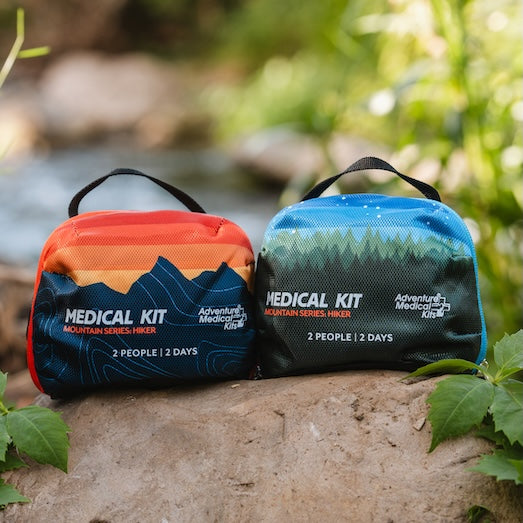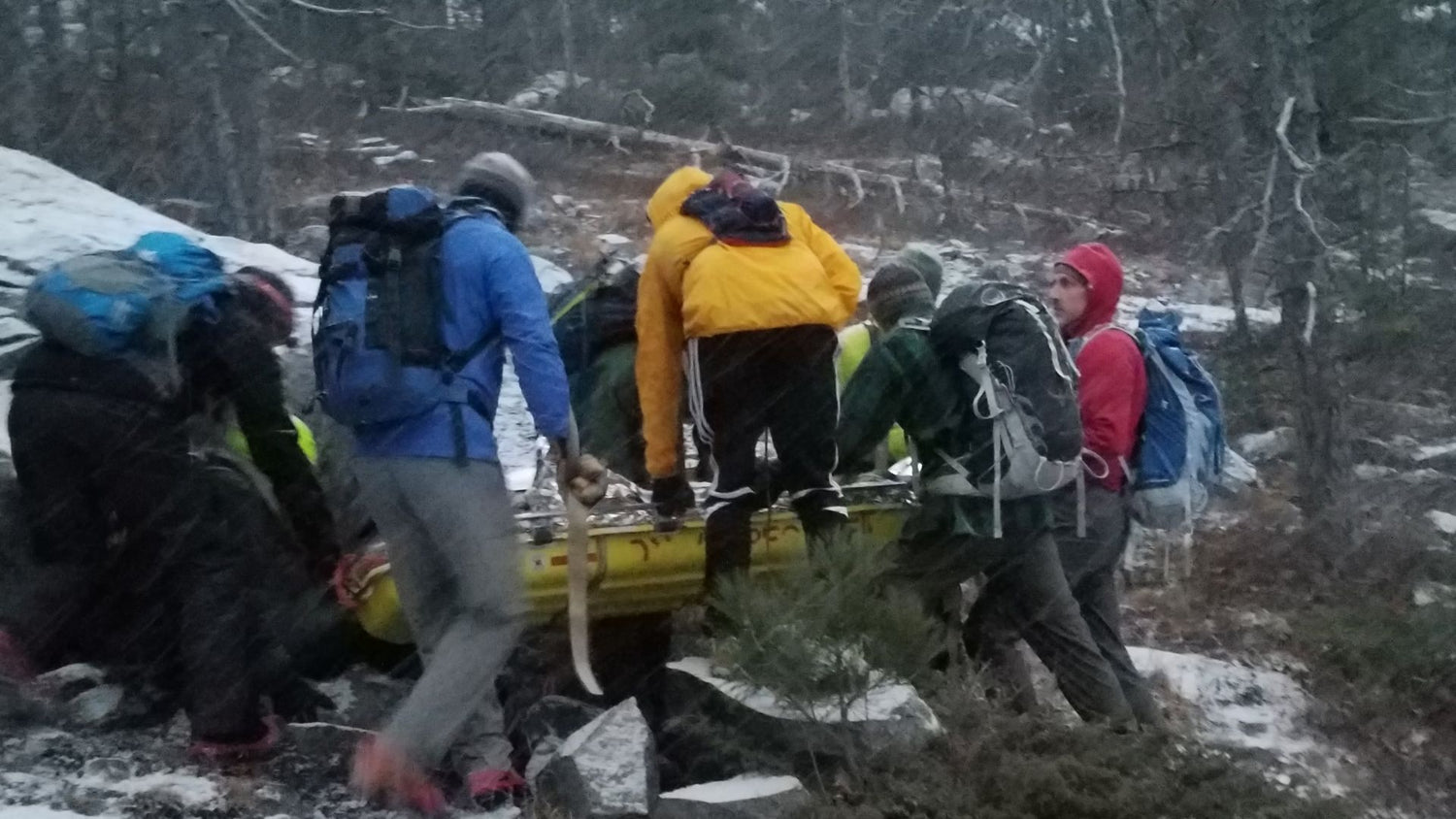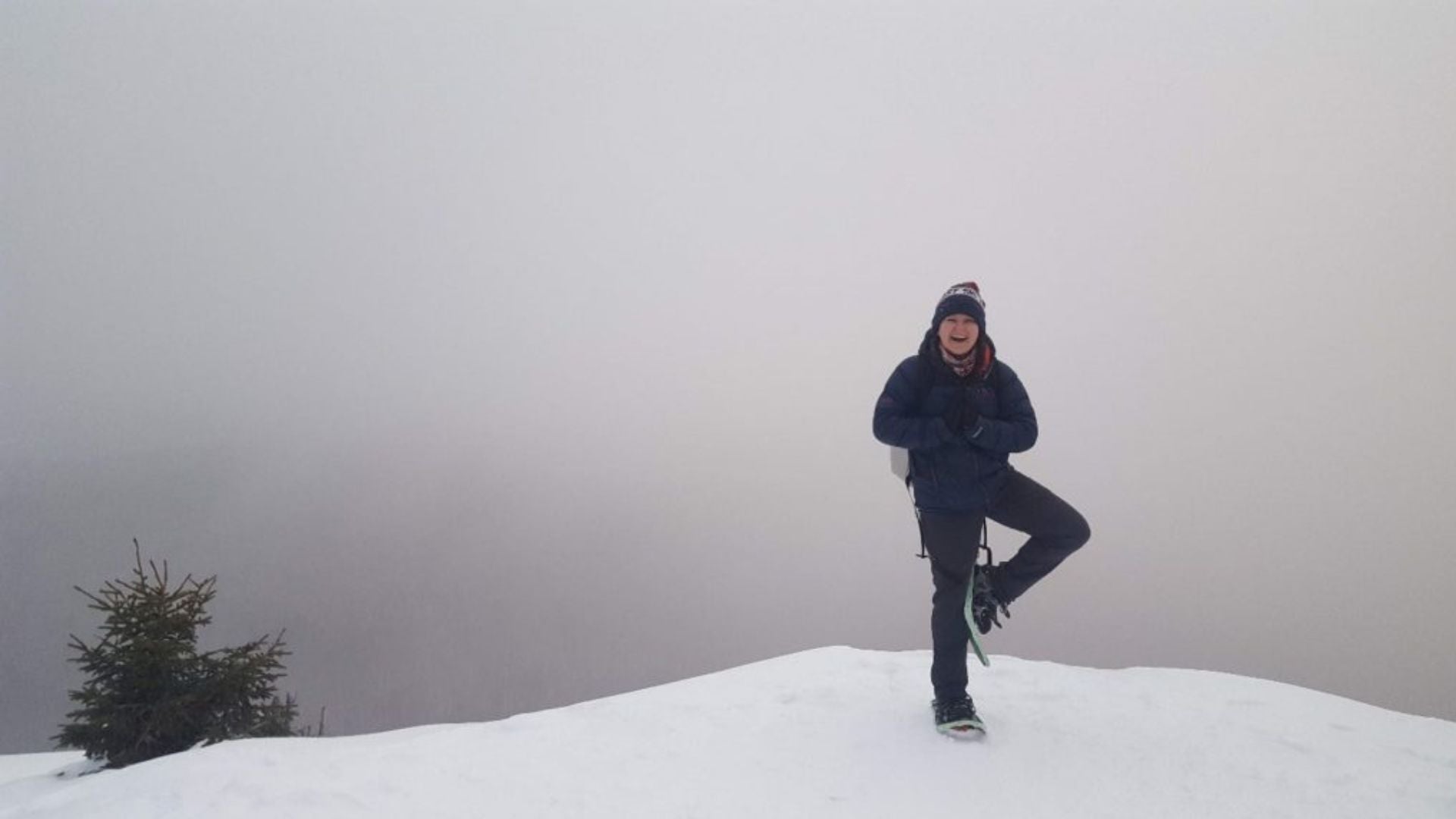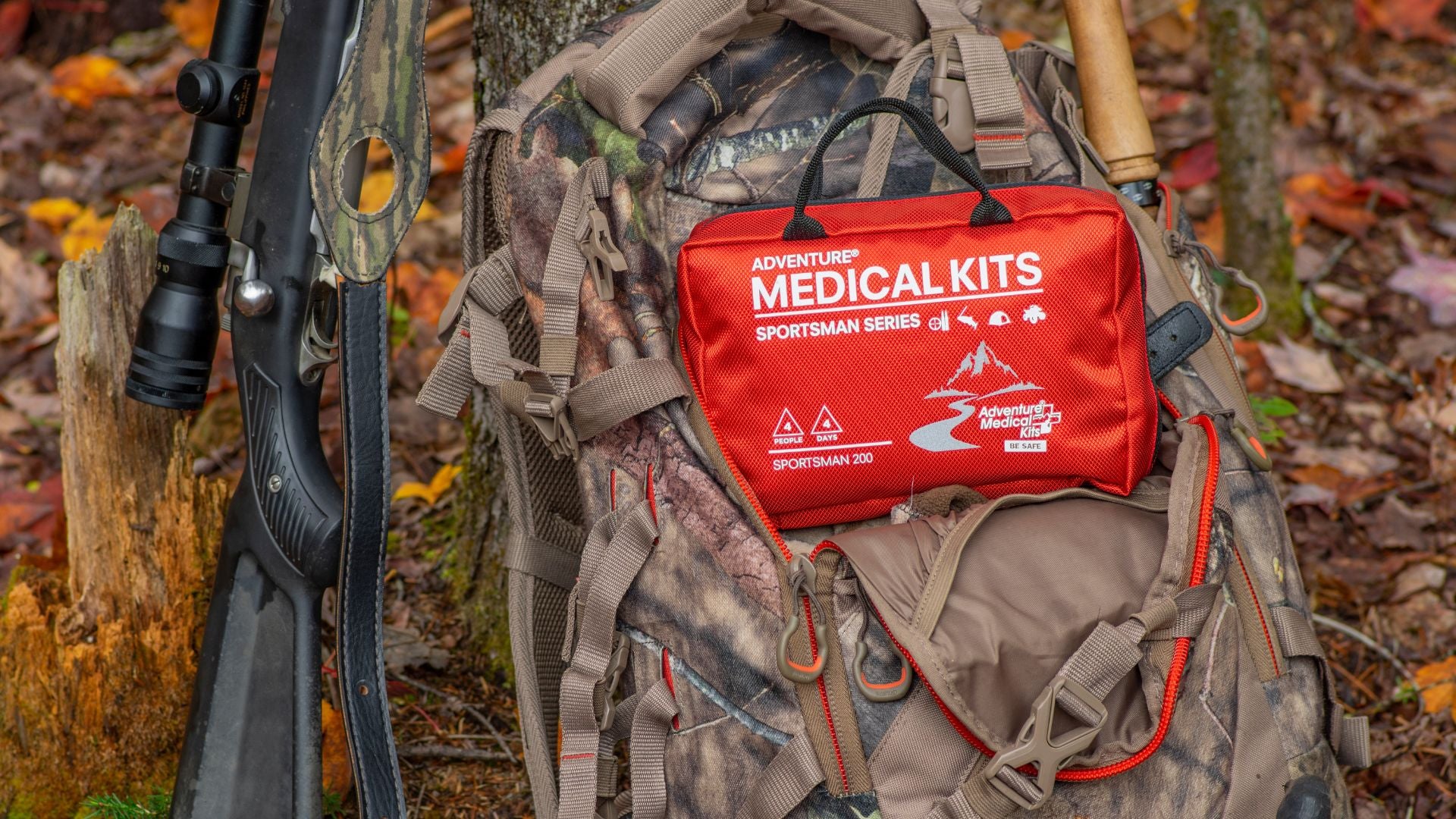When Ben Cargill’s leg shattered during his descent of Moat Mountain, his survival in the frigid, snowy weather depended on the preparedness of himself and his friends to keep him warm and stable until help could reach them.
December 9th, 2017 began as a typical early winter day. The skiing wasn’t all that great, but the preseason stoke was still high. So naturally, I needed an outlet for said stoke that didn’t involve skiing the same strip of snow 50 times. We were due to receive our first major storm of the season later that afternoon, so I decided to join some buddies on the iconic Moat traverse that frames the Mount Washington Valley’s western edge.
Consisting of 3 peaks (South, Middle, and North Moat), the whole ridge spans a distance of about 9.5 miles. With such a relatively short distance to cover, we had planned to be finished by midday, just in time to try out a new brew pub that had just opened in town. Little did I know these plans were not meant to be.

The tallest of the three peaks tips the altimeter at about 3100′, with the shortest peak in the range just barely rising to 2700’. All summed up, aside from their aesthetic value, to me these peaks were nothing special. Born and raised in the valley, I had hiked and biked them numerous times, but never actually run the whole range in one session. Herein lies the first lesson to be learned.
Lesson 1: Familiar terrain can provide a false sense of security, negatively affecting how prepared you are.
Both my companions on this day opted for the fast and light approach, showing up with nothing but running vests with some water and an extra layer. I on the other hand, tend to adopt the better-safe-than-sorry approach. Sure it might mean I have to carry an extra pound or two; however, I always thought it’s a small price to pay to survive the unexpected.
Now fast forward to the summit of South Moat. We’re about 7 miles in to a 9.5 mile run, just about to begin our final descent to tailgate beers. Up until this point, the run had been about as expected. Mixed rock slabs and water ice covered the trail with just a slight dusting of snow to keep things interesting. Sure, this made the descents more challenging, but nothing careful foot placement and some micro spikes couldn’t solve. I will admit, it was at this point in the run I came to the conclusion I was suffering from what I call “new gear syndrome.” Instead of packing micro spikes (which would have made all the difference), I had opted for the lighter, more svelte nano spikes. For those unaware, micro spikes are constructed with ¼ steel spikes, whereas Nano spikes are only designed with teeny little carbide pins, making them much better suited for running on rolling terrain.
We began our descent at 11:51am. The descent began with bare slab rock. We collectively decided to remove our traction rather than risk tripping or grinding down our spikes. This was mistake number two of the day, a lesson we only learned in retrospect.
Lesson 2: Burning through a $60 piece of equipment is far more favorable than a $1500 ambulance bill.
Like many folks before us, we opted to take a quick video for Instagram points. I thought it would be cool to run behind my companions to give a follow cam perspective. Of course after several seconds of doing this, it occurred to me that this is an excellent way to roll an ankle. Satisfied with my footage, I put my phone away, made an attempt to catch up, and then as fate would have it, my day got a whole lot worse.
It all happened so fast.
As best I can remember, I was just about caught up to the group when I noticed I was beginning to slide. Attempting to stop, I did my best to rotate my torso to maneuver myself off the ice slab- this worked, almost. Though half my body stopped, the other half did not. In the blink of an eye I felt the unmistakable snap, crackle, pop of a broken bone. (Later, as I would find out, it was not just broken, but completely shattered.)

Initially, the pain wasn’t the worst in the world. Though my leg was arched to left at an angle that clearly indicated a tib/fib fracture, I thought the situation was salvageable. It was not. Within two minutes, the excruciating white hot pain of a shattered bone sank in. Coupled with the shock from an injury this severe, I was beginning to accept the fact that for the first time ever, I was going to have to swallow my pride and dial 911.
As a local, I’ll admit I always harshly judged those requiring rescue unfortunate enough to have their story printed in the paper. I used to joke to my companions that if I were ever injured in the backcountry, I would rather be rolled out of the woods than suffer the shame of being carried out for the community to read about in the local paper. Now, while I was lying on the side of a trail in massive amounts of pain, to be concerned with such a thing seemed almost trivial. That was when I learned my third lesson of the day.
Lesson 3: It does not matter how familiar you are with the terrain or how confident you are of your athletic and technical abilities; accidents can happen to anybody. Period.
As the pain got worse and I began to lose body heat through conduction, the situation seemed to deteriorate. In addition to dealing with a severe injury, we now had to cope with preventing hypothermia and the fact that it was starting to snow. Originally we had planned to be off the ridge well before the storm was supposed to hit, and of course we were running, so none of us really brought much in the way of extra layers or provisions for that matter. Fortunately, regardless of the activity, I have an almost obsessive tendency to over prepare. I had no less than 3 extra layers and enough food and water to last the night if absolutely necessary. For all my friends who constantly give me a hard time over my unnecessarily heavy pack: survival situations such as this are EXACTLY why.
In the aftermath of this accident, I’ve made it a point to stock all my packs with a Survive Outdoors Longer Emergency Bivvy, first aid kit, and emergency blanket. None of these items require much real estate in a pack or weigh that much. In this case, I will forever be grateful that one of my companions (who also happened to be a PT) was prepared and brought a Survive Outdoors Longer Emergency Bivvy.

Given the fact that rescues, no matter how far from the trailhead, can take HOURS in the backcountry, there is absolutely no excuse for anyone to be caught without an emergency blanket. These things weigh mere ounces and cost next to nothing. A small price to pay for something that can be lifesaving as it was in my case. Had we not brought an emergency bivvy, I would have likely reached a dangerous stage of hypothermia.
To put things in perspective, South Moat is not a tall mountain. The trail is not difficult, the average hiker could make the summit in less than two hours. The accident occurred just below the summit, which is about 2.4 miles from the trailhead. After realizing we could not splint our way out of the situation, one of my friends called 911 at 12:04pm. Then we called my Dad. My father, an avid outdoorsman like myself, reached us in about two hours.

The first EMT got to me around 3pm. It took about half an hour to take my vitals, splint and realign my leg, get wrapped up, and loaded in the stretcher. It took another 4 hours to get carried to the trailhead. By then, the snow storm was in full swing, making a litter carry even more challenging than it already is.

Finally arriving at the ambulance at 7:30pm, I arrived in the ER around 8pm, and was in surgery shortly thereafter.
Conclusion
This event was by far the most extreme case of pain and suffering I’ve had to endure. Suffering a terrible broken leg is bad enough, but add the elements and a 4 hour carry out to the ordeal? It was an absolutely miserable experience. This accident was humbling; it reminded me just how crucial it is to be adequately prepared in the backcountry, no matter how short the trip. Had we not been as prepared as we were, the outcome would have been very different.
It was also incredibly mind blowing just how many people it takes to carry a litter, even if over a short distance. It took 23 volunteers from 3 organizations, not to mention the efforts of some kind hikers who stopped to give aid to get me out of the woods.
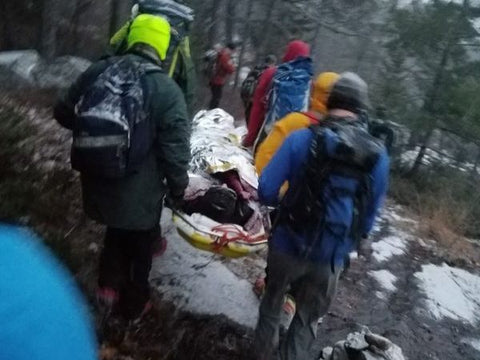
So, if you’re going to take anything away from this story, it’s be prepared for anything! I learned a lot of lessons the hard way that day.
- Although any injury is miserable, just remember it can always be worse. In this case, I was fortunate enough to be with friends who had first aid training and an appropriate level of preparedness. The accident could have occurred farther away from the trailhead, I could have been alone, we could have had no cell service, the weather could have been worse. I consider myself lucky.
- Always bring a cell phone! Yes, we head into the outdoors to avoid technology, but these devices are absolutely crucial in an emergency situation. Save the social medial for tailgate beers, as a dead phone is just extra weight. We needed a cell phone to dial 911, then to maintain contact with the fish and game officer organizing the carry out.
- Rescues can take hours in the backcountry. It took over 8 hours to get to a hospital from the site of injury. Think of all the time it takes for rescuers to find out where you are, to call volunteers for a litter, and then simply to reach you. Conveniently, my injury occurred at noon on a Saturday. Now imagine that happening miles away from the nearest trailhead late in the day with no cell service. The best thing you can do is utilize the physical and mental tools available to you to avoid being in a situation like that in the first place. Take a first aid class, check the weather, and research your route. The best defense to an unexpected situation is preparation.
- Accidents can happen to anybody at any time, regardless of your skill level. I pride myself on always being prepared, on knowing when to turn around, on my physical fitness, etc. No one is immune, always leave your plans with someone, and when possible, recreate with friends! I can’t imagine how scary it would have been if I had to wait for rescue alone.
Acknowledgements
There are A LOT of volunteers needed for a successful rescue. All said and done, it took 24 individuals to carry me out of the woods. Although I would have preferred to not have had this accident occur at all, I am incredibly fortunate that it happened the way it did. If you think about it, to have professional medical staff on the top of a mountain with you after less than 3 hours is impressive.
I’d like to acknowledge Conway EMS for their assistance in putting my leg back together and NH Fish and Game Officer Alex Lopashanski for his efficiency in organizing enough people to carry a littler. I’m grateful for the efforts of some hikers who not only stopped to donate layers, but also hiked all the way down to the litter, then all the way back up to help carry me out. I’d also like to thank the efforts of the volunteers with Androscoggin Valley Search and Rescue (AVSAR) and the Mountain Rescue Service (MRS) for carrying me out of the woods.
To my two friends accompanying me on the run, Sean and Matt: you guys are amazing friends. I consider myself to be truly lucky. Credit is also due to all the amazing staff in the orthopedics office at memorial hospital for putting my leg back together. A big shout out to my dad whom, upon hearing of the accident, left work immediately to come help me out, making it to us in record time. And of course, a massive thanks to my family and friends for assisting me during the recovery process. You’re all amazing people.
Stay safe out there friends.
